Google Pixel vs Apple iPhone 7
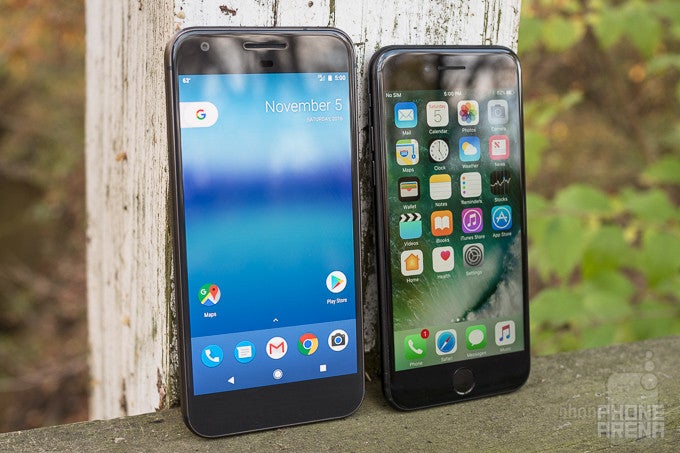
Introduction
What's the quintessential Android smartphone now? With Apple and iOS, it's easy, and while there will be a holdout or two shouting about the virtues of the iPhone SE until no one's left to listen, it's not at all controversial to award the iOS version of that honor to the iPhone 7. But with Android? There was a time we'd point to the uber-popular Samsung flagships as probably the most obvious example of how to successfully make an Android phone, but with the huge PR hit the Galaxy brand has taken as a result of the Note 7 meltdown, we're accepting new nominations.
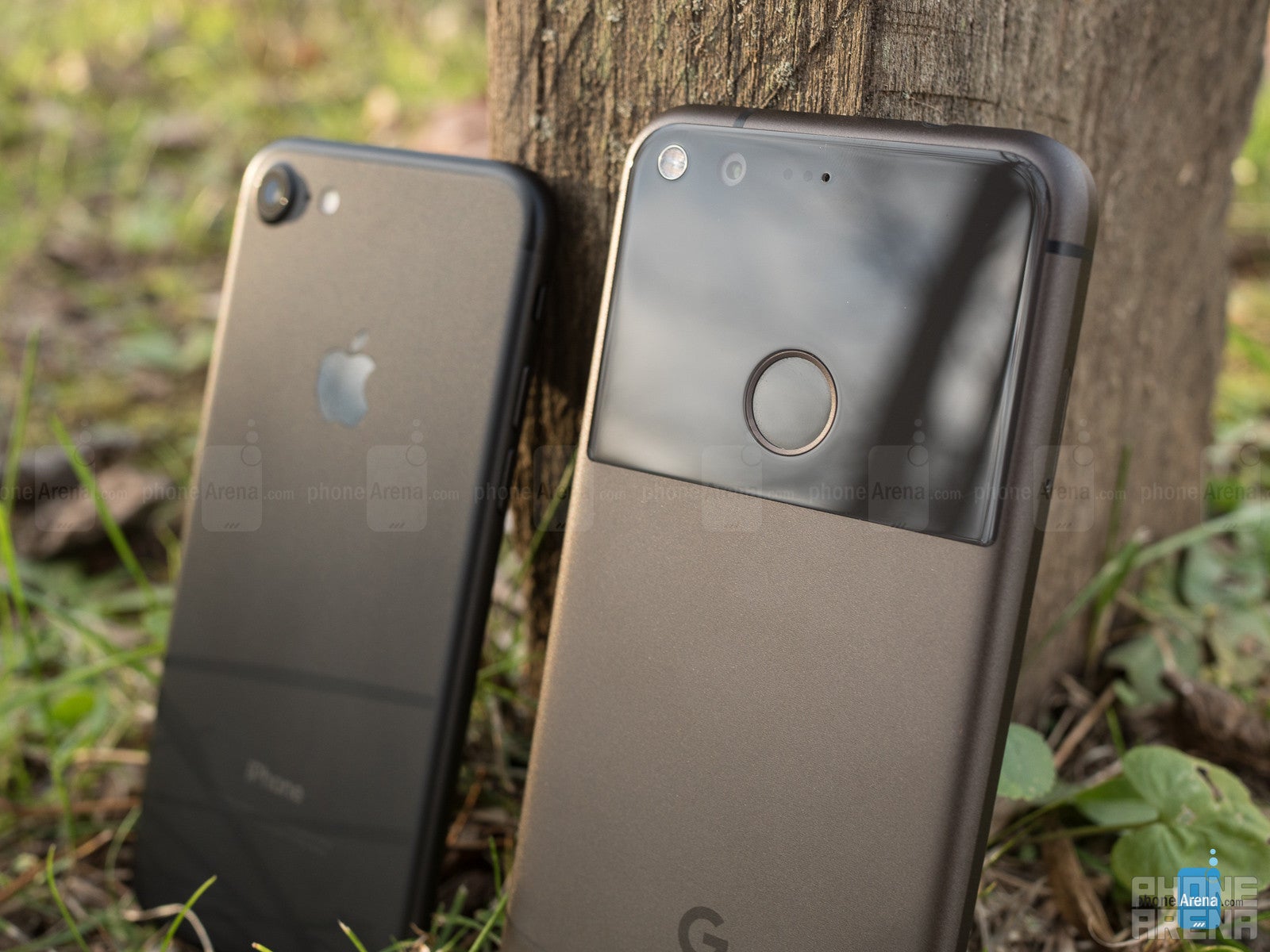
Times may change as we roll into the new year and get to meet the next generation of Android heavyweights, but for now, the Pixel is arguably the best example of what Google's smartphone platform has to offer.
Now that we've identified the Androidiest Android and the iPhoneiest iPhone, what better to do than to see how these two phones at the top of their game stack up against each other? They're very different handsets, sure, but what does each have to offer – where are their strengths and weaknesses? You're about to find out, as we compare the Google Pixel against the Apple iPhone 7.
Design
Google may not have caught up with Apple's design refinement just yet, but it's close
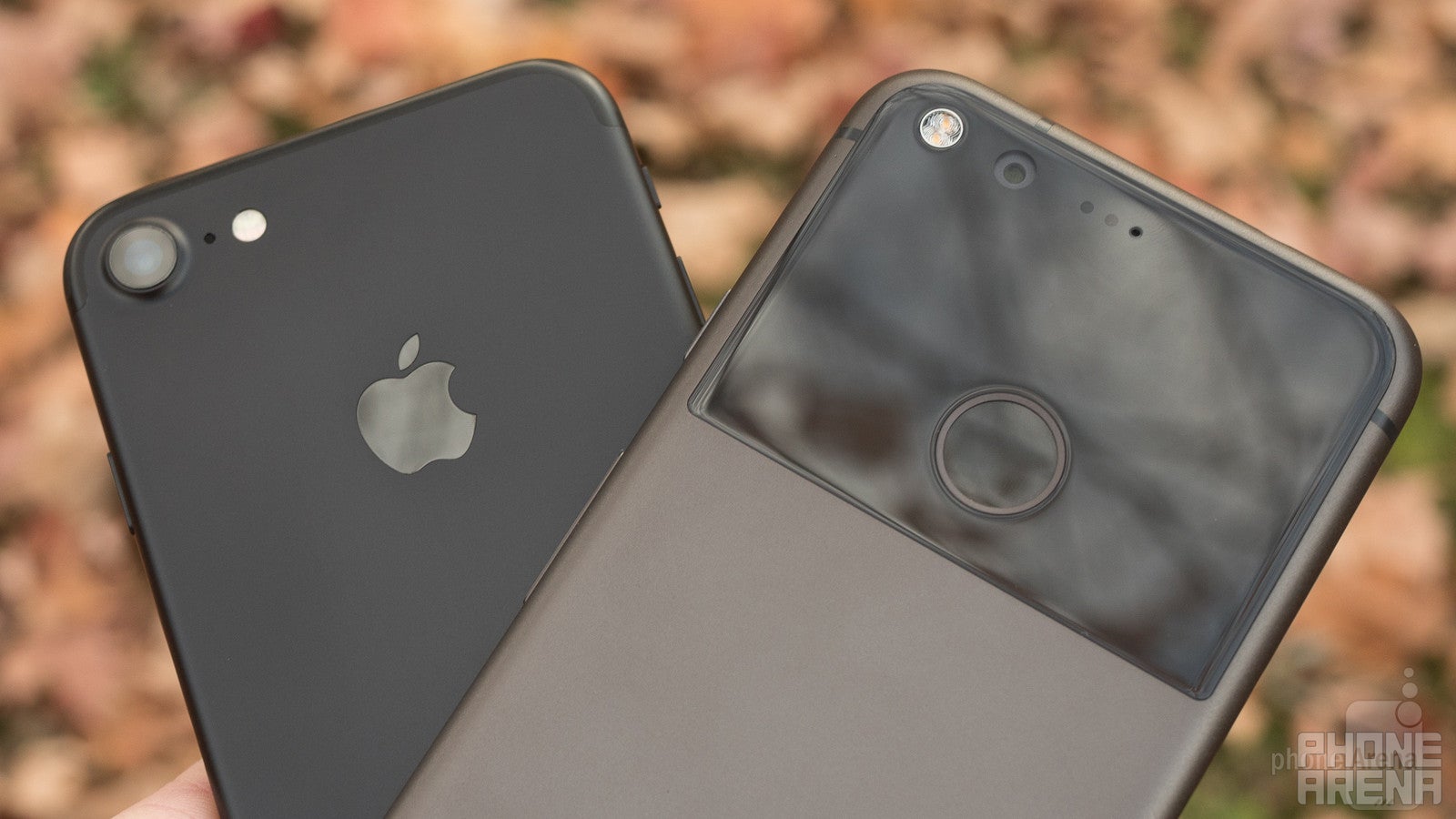
Both Apple and Google know that smartphones aren't one-size-fits-all, and they're smart enough to give their users multiple size options. But while Google's been all too willing to embrace larger handsets (look no further than the fall of 2014 and the solitary launch of the six-inch Nexus 6), Apple's still coaxing some of its base away from their four-inch (or even smaller) iPhones. As a result, the iPhone 7 arrives as a more compact 4.7-inch model to the Google Pixel's 5.0-inch screen.
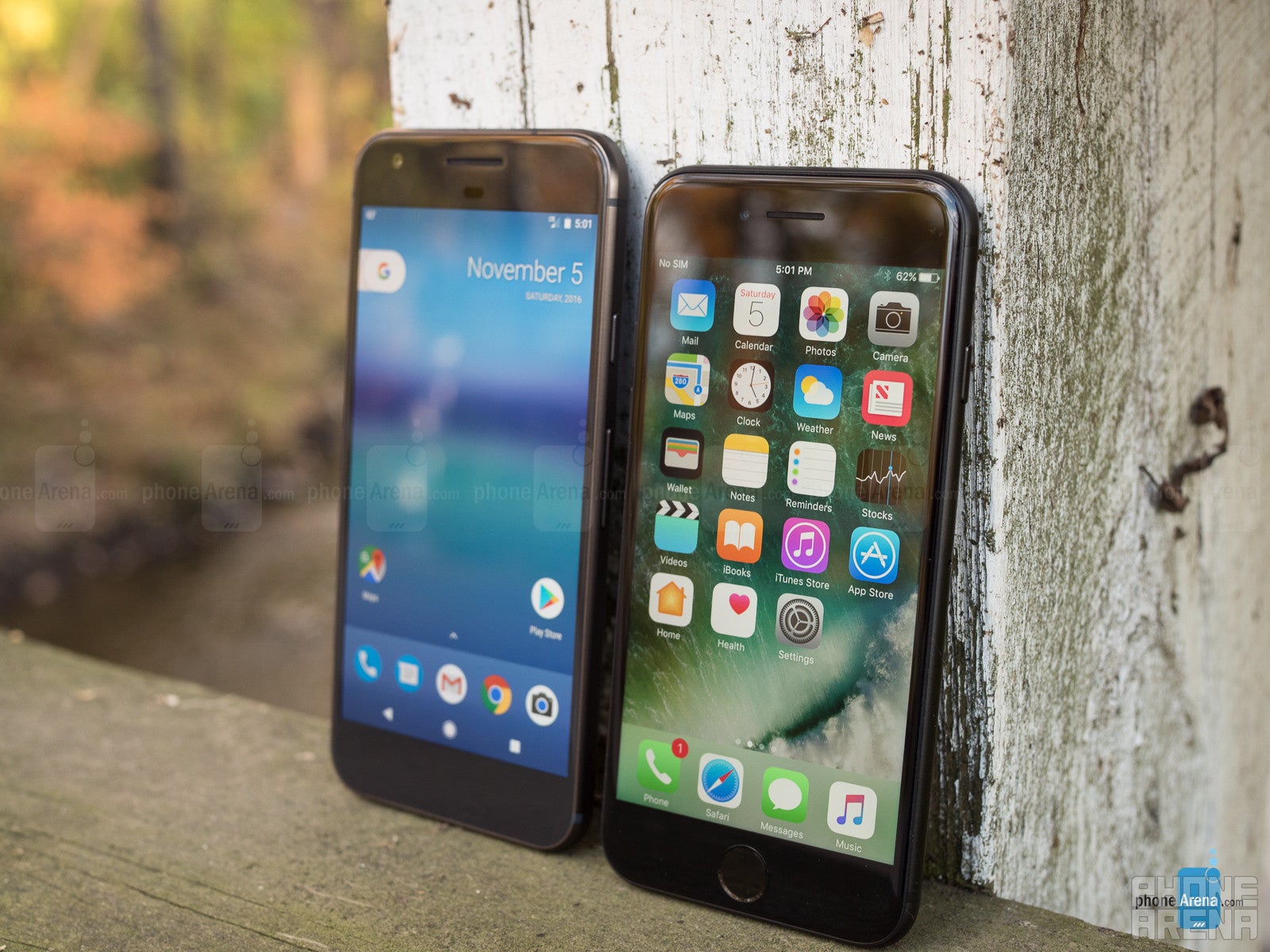
The Google Pixel is also a very well built handset, and one whose design brings with it its own controversies: the half-glass back is an unusual choice (though one we quickly found ourselves coming around to), and in a world where every handset manufacturer seems to be wholeheartedly embracing waterproofing (including long-time hold-out Apple), Google elected to do without for the Pixel. It's a larger phone than the iPhone, understandably, a situation only compounded by Google's edge design. And with a combination of curves, flat surfaces, and angled bevels, the Pixel may offer a comfortable grip, but it's also a model that never feels quite as sleek and effortless as the iPhone.
Display
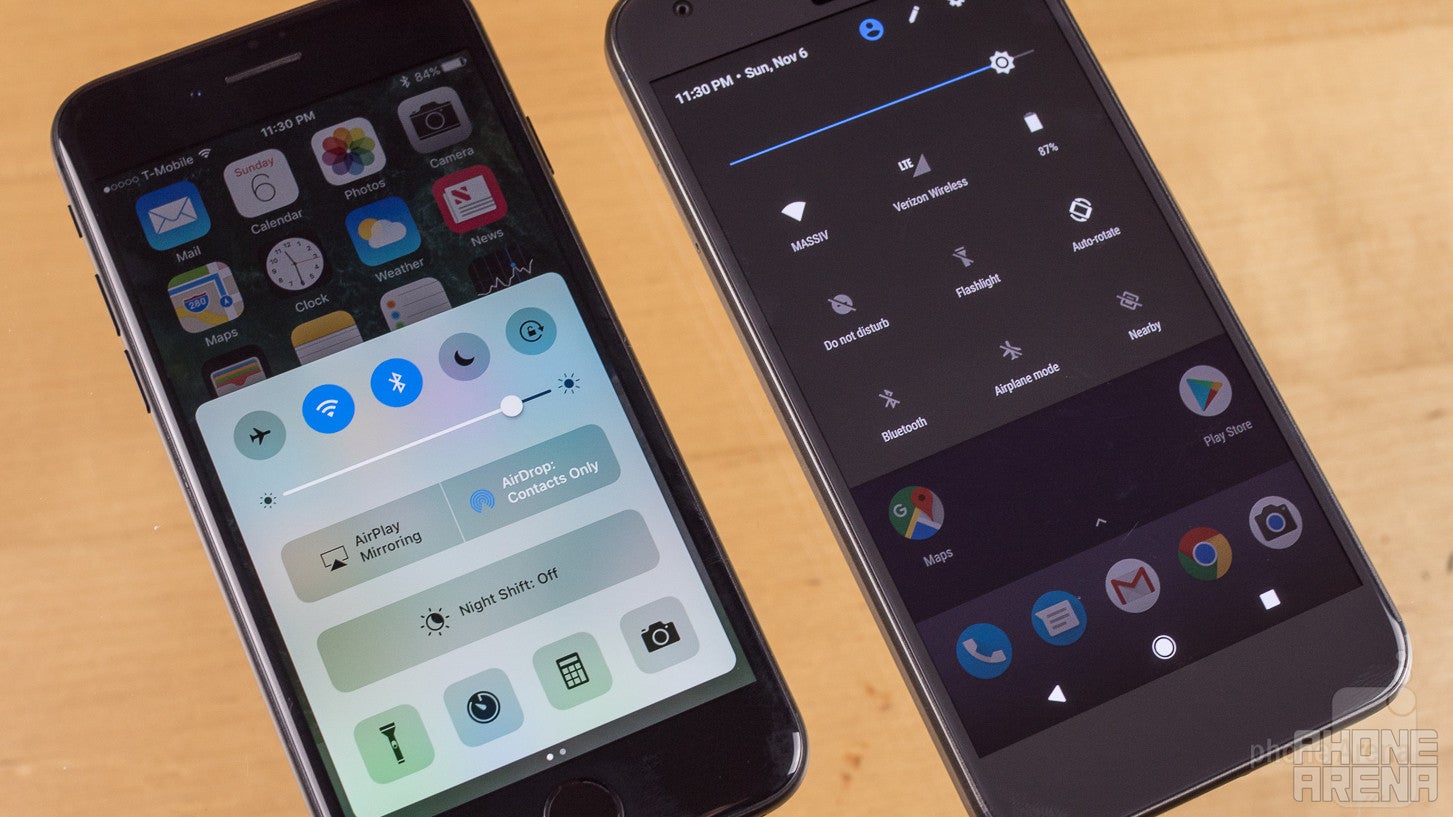
Apple could be going the way of AMOLED panels soon, but with this generation of iPhone, it returned to familiar LCD screens. The 4.7-inch screen sticks with its familiar (for Apple, and only Apple) 750 x 1334 resolution, for a pixel density of 326 ppi.
Google's 5.0-inch AMOLED screen on the Pixel may not be much larger than Apple's, but its 1080 x 1920 resolution is significantly higher, offering a density that hits 441 ppi. Honestly, though, both screens look super-sharp, and you're never going to be spotting individual pixels under general usage conditions.
When testing the Pixel's screen, we had some issues with color accuracy, but with the ability to correct that over-saturation in software, it's not a huge deal. The much more important consideration between these two displays is how they fare in outdoor visibility, and the limited brightness levels the Pixel is capable of hitting end up putting it at a big disadvantage compared to the extra-bright iPhone 7 – one of the brightest screens we've tested all year.
Interface and Functionality
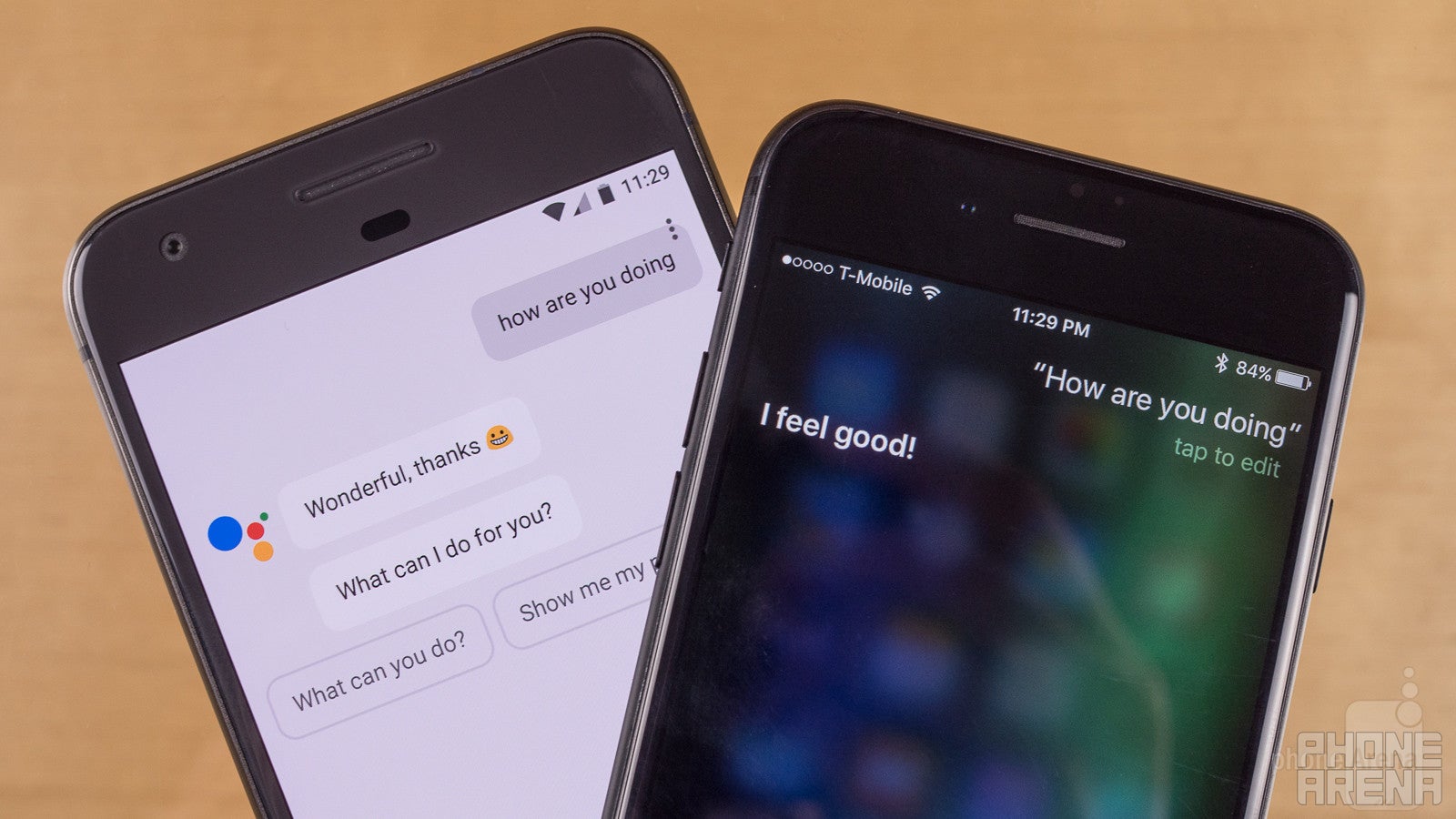
Android and iOS are still very different beasts, even as each seems to be picking up more features from the other over time – in another ten years, will they be difficult to tell apart? And though we're not quite at feature parity just yet, a huge portion of the extent to which you prefer one phone or the other comes down to preferences about how their respective operating systems are executed.
As always, Android score points for its customizable nature and flexibility – even as iOS makes progress there in its own right. And while Nougat on the Pixel introduces new looks for familiar interfaces, like the Google search bar, it retains the ability to dial things back to the past – which we can't always say for things iOS changes.
One big consideration with these two phones in particular is how they implement their voice assistants. Siri picks up new tricks like enhanced third-party app integration, but it should still feel very familiar. Google, meanwhile, upgrades its voice-powered search and Google Now services to come up with the new Google Assistant. It aims to deliver a very natural, conversational interface that works fine in some cases, but isn't always as fluid-feeling as Google would like it to be. And while the interface looks a bit new, it very much feels like an upgrade to existing voice services, rather than a new tool in its own right.
Both iOS and Android are capable of split-screen multitasking, but Apple reserves the feature for its tablets, while Google's happy to let even Pixel users enjoy the mode.
In the end, these are both very powerful, mature operating systems that go out of their way to streamline the user experience, deliver as many features as possible, and make using smartphones as easy for novices as seasoned professionals. Both are largely successful, and as we said a moment ago, the winner here is almost certainly going to come down to personal preference.
Processor and Memory
Both these phones have a lot to prove, and neither lets us down in terms of raw speed
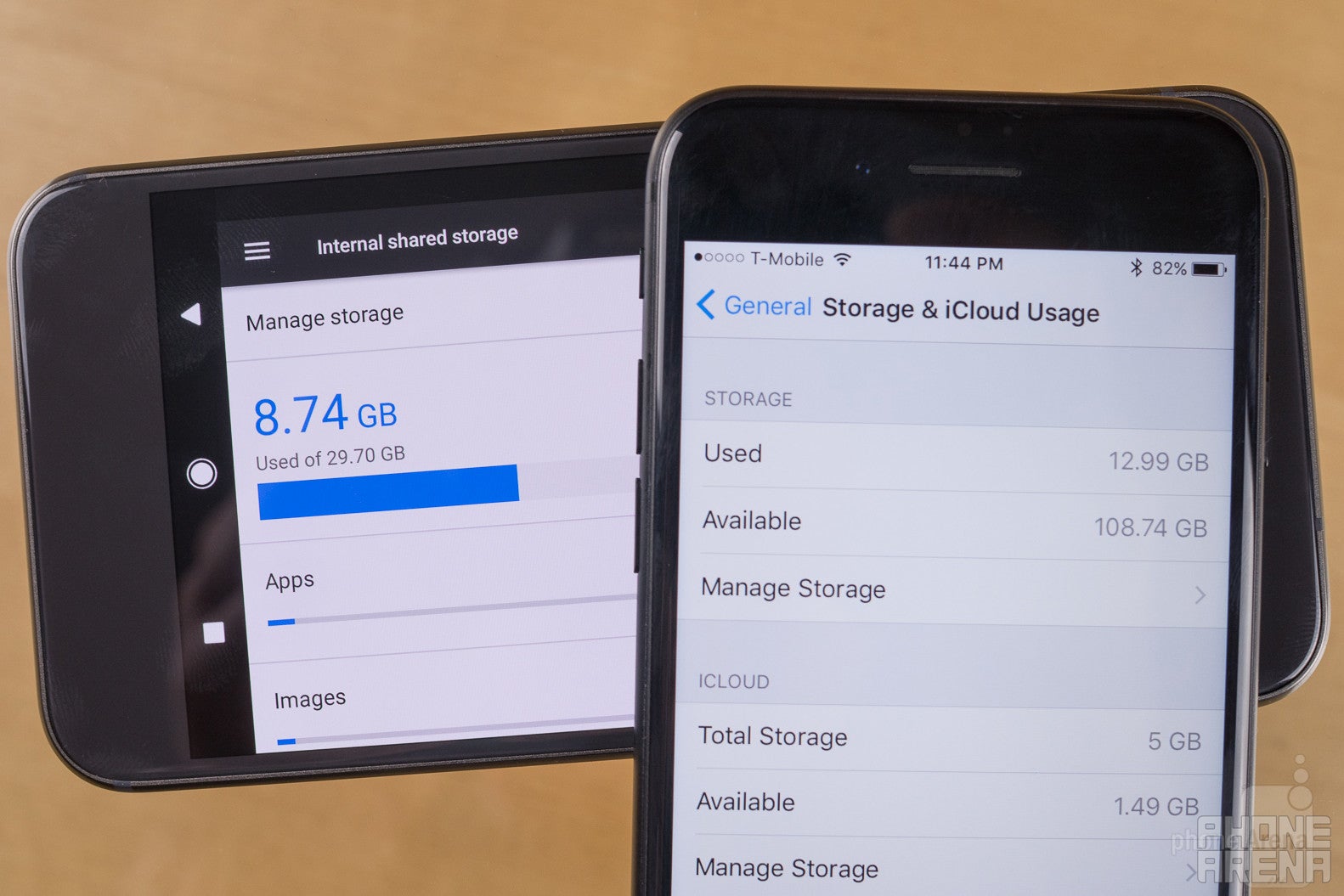
These two handsets are both showcase devices, introducing the world to some of the latest mobile silicon: Apple's A10 chip, and the Qualcomm Snapdragon 821 in the Pixel. For Apple, understandably, that represents a decent leap forward – and the infrequent pace at which we see new iOS hardware arrive only serves to punctuate the improvements in processing power.
With the Snapdragon 821, the boost is a little more subtle – and this chip isn't much more than a slightly faster 820. But while there's a lot less of the “wow, this feels so much faster than other phones” component, the Pixel's still right up there at the top of the Android speed charts.
Looking just at these two handsets, though, irrespective of processing might of their predecessors, both offer cutting-edge performance that translates into a largely smooth, stutter-free use experience.
The Pixel may offer twice as much RAM as the iPhone 7, but unless you're pushing your handset especially hard, that's not going to have a huge impact on usability – maybe the iPhone 7 might have to reload apps into memory a little sooner, but for the most part that doesn't translate into slowing down your workflow.
Both phones are smart enough to set a 32GB storage baseline, but the iPhone offers both more storage options, as well as a higher ceiling at 256GB. Neither of these companies plays nicely with expandable storage, forcing buyers to be aware of their long-term storage needs going in to their purchase.
Connectivity
Apple and Google are both interested in making their phones available to users on an assortment of networks, including both GSM and CDMA-based carriers. In the US, Apple slightly outdoes Google with better carrier integration, selling its phones through all the major networks, while Google's partnered up with Verizon for an exclusive deal – you can still grab the Pixel independently and use it on a compatible network, but don't expect to walk into a T-Mobile store and buy one (though the carrier will offer you some money back if you bring your own).
In the wired world, Google goes the USB Type-C route to Apple and its Lightning connector, and while both have cool reversible interfaces, the Pixel's USB Type-C has the benefit of being more compatible.
Camera
Smartphone cameras are more impressive every year, and Google may just have what it takes to outdo Apple
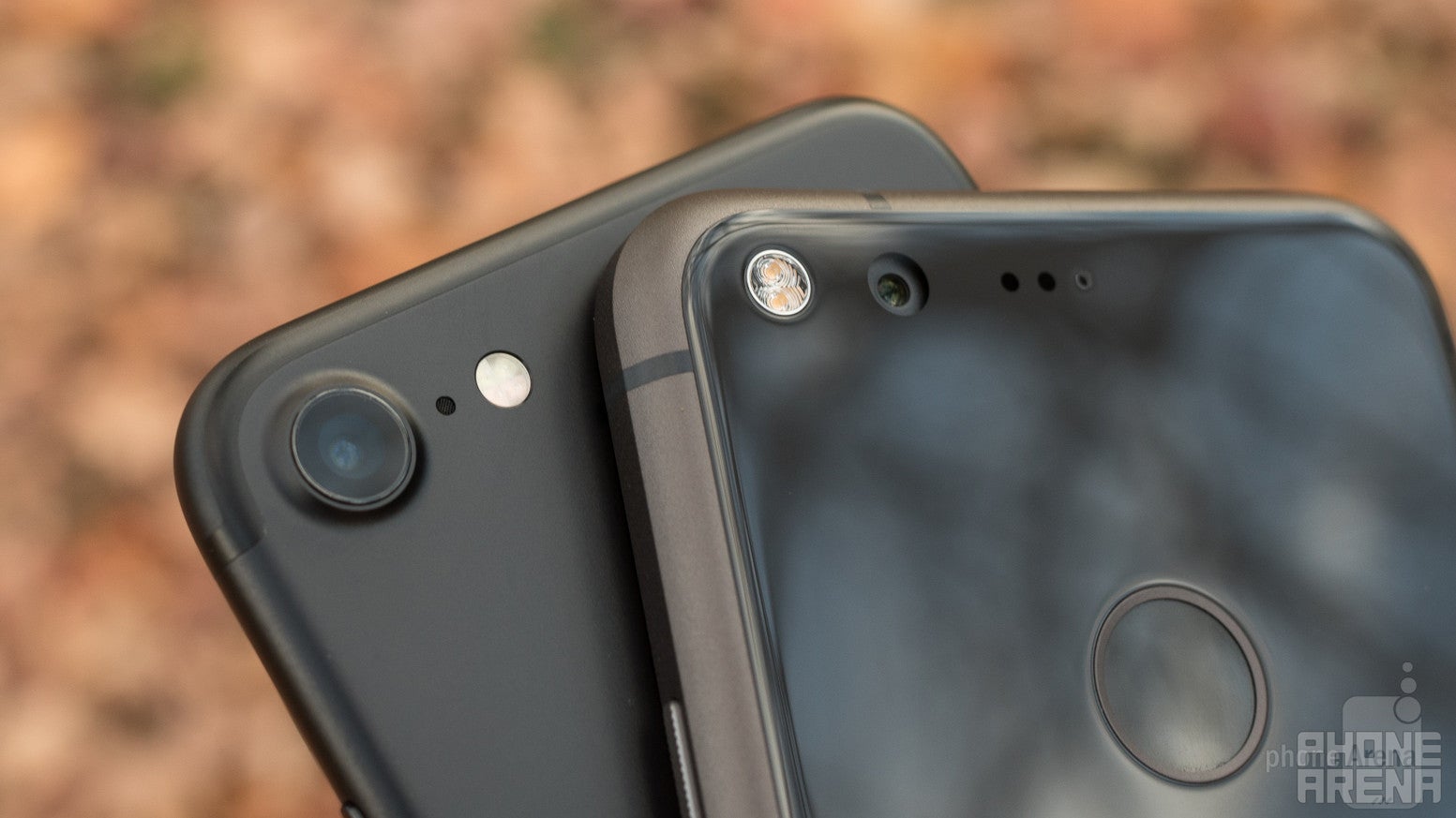
There's probably no more subjective consideration in evaluation smartphones than camera performance: show a dozen people pics from two different phones side-by-side, and it's not crazy that you could find half emphatically supporting one set, while the other half's big fans of the second. We'll circle back to image quality in a second, but first let's do a quick recap on camera hardware.
Both phones take advantage of 12MP Sony sensors for their main cameras, but while Apple's camera has a big f/1.8 aperture, Google goes with a smaller f/2.0 arrangement. Apple also offers optical stabilization where Google does not, and its flash is a quad-LED component to the dual LEDs on the Pixel.
Image quality
While Apple may seem to have the lead when it comes to camera hardware, results are what matter.
And the reality is that both handsets produce wonderful pictures. It's really impressive how neither manages to outclass the other – no matter which way you decide to go, you'll comfortably know that you're carrying a top-notch camera in your pocket. Most of the pictures we took actually looks extremely similar. In some of the scenarios, though, we noticed the iPhone 7 going for a more vivid, warmer shot, compared to the Pixel. Which type of look you prefer, though, will be up to you.
Video recording
Again, on paper, we've got two video-recoding systems that seem evenly matched: same 4K support, same high-frame-rate slow-mo modes. And in practice, neither one's going to let you down.
In our comparisons, we found the Pixel producing some darker-looking video, but still plenty sharp, and quite stable, thanks to Google's algorithmic enhancement. The iPhone video was pretty stable itself, and while footage from both phones sounded alright, the Pixel's audio seemed more than a bit louder.
Both phones showed some admirably fast video refocus times, helping to ensure that even a moving subject remains clear and sharp.
Multimedia
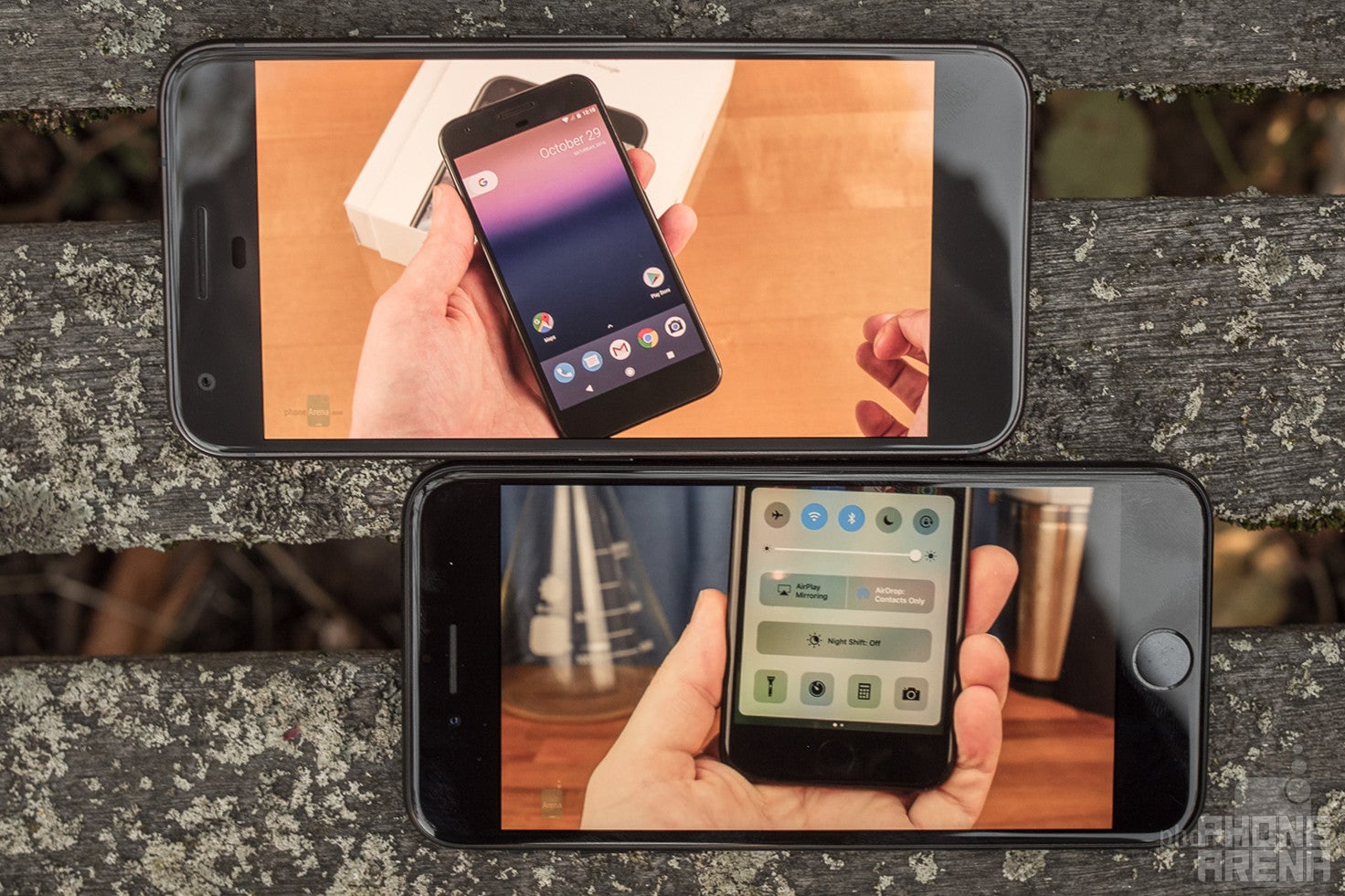
The Google Pixel comes with a single, bottom-mounted loudspeaker, while the iPhone 7 made the move to stereo speakers this year, for a slightly more immersive audio effect.
Of course, multimedia consumption isn't just limited to working your phone's speakers, and there are plenty of times when we need to keep a little private – and hook up some headphones. Here, the Pixel is at a decided advantage simply because it hasn't abandoned its analog headphone jack. Say what you will about the quality of digitally-connected audio or Apple being forward-thinking, but its decision to strip the iPhone of its headphone jack is still – at this moment in time – a pain in the neck (or a less SFW body part).
Call Quality
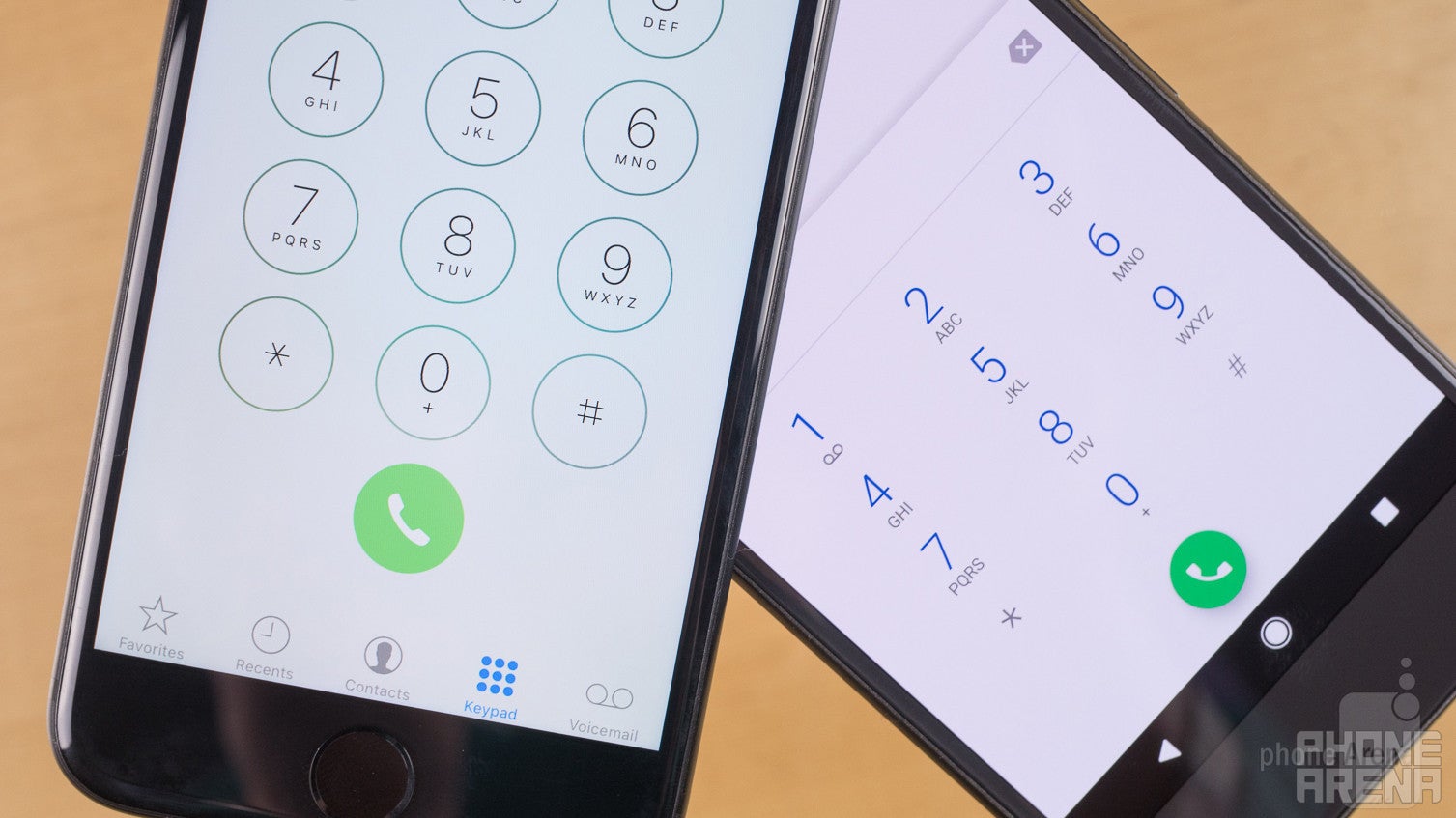
Shock of shocks: with all this high-end hardware inside, calls on both phones sound stellar. It's a tough call, but if we had a gun to our head, the iPhone may deliver calls with a lower noise floor, helping to sound exceptionally clear – but that's by a small margin, with the Pixel still sounding great under most circumstances.
Battery Life
An incredibly close race may be decided by recharge times – now if we only had wireless
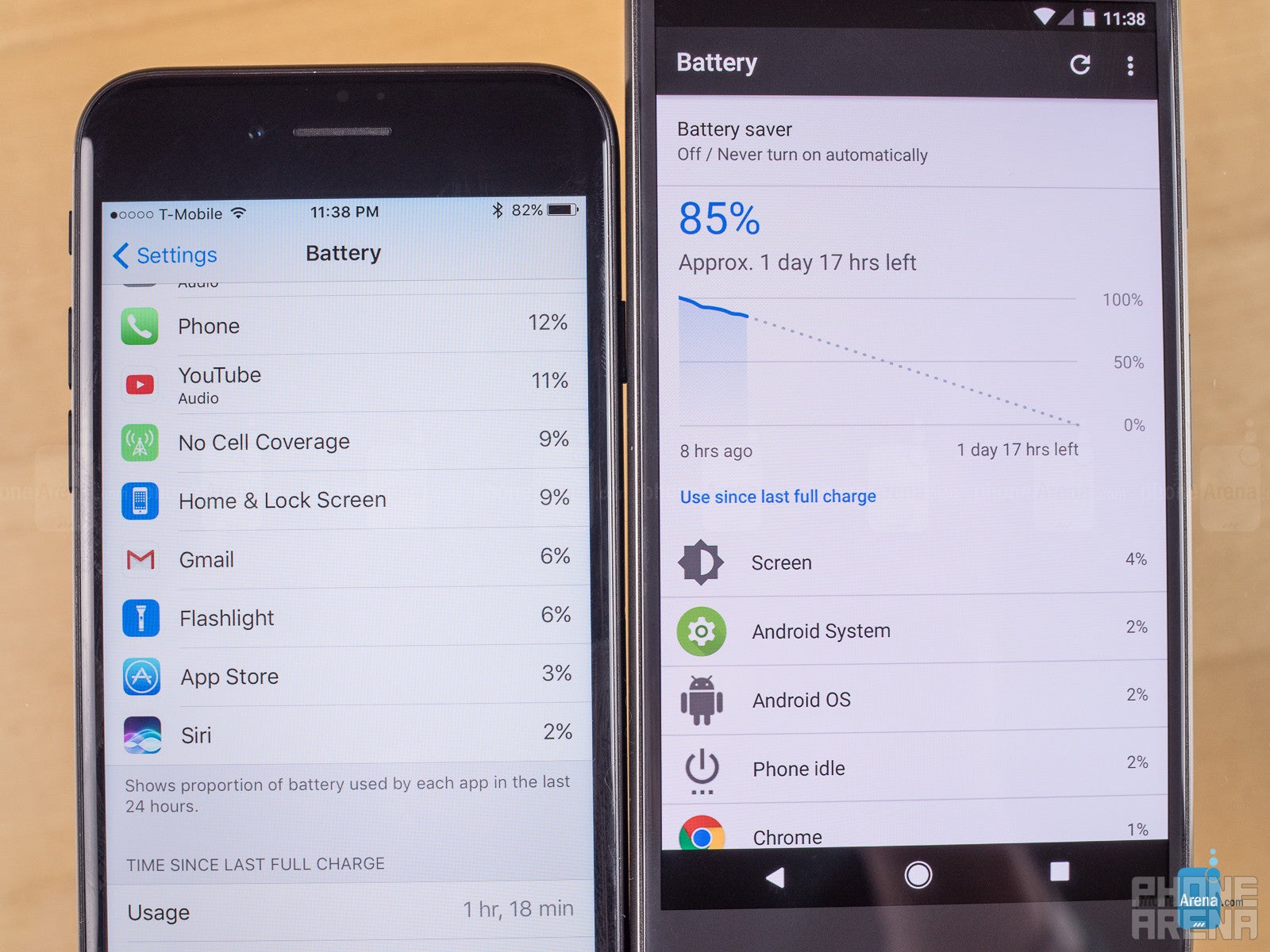
The Pixel has a slight lead in recharge times, coming back up to 100% capacity about 20 minutes faster than the iPhone – but the difference between two hours and two hours and change may not ultimately matter that much.
Neither phone supports wireless charging, which is a darn shame – at least it would help us decide a winner that much easier. But as it stands, these two are really well matched in the power department.
Conclusion
Google and Apple really don't make it easy for us to identify one clearly superior phone, and maybe that's a good thing – there's so much on the line with these two handsets that the companies behind them have taken little to change, and it really shows just how much care went into making each of these phones the well-executed handsets they are.
But while both are stellar handsets, a few specific things really stand out about each. The iPhone 7, for example, is just a masterpiece of phone design: slim, sleek, and feels nothing short of incredible in the hand. Google does a great job on the Pixel, too, although admittedly not quite at the same level yet.
Some strengths really do stand out for each: if you love the outdoors, maybe the iPhone 7's waterproofing and extra-bright screen are just what you need. And if you're still sore about Apple's decision to kill the headphone jack, Google's happy to connect the Pixel to your cans of choice.
A few years ago a Google phone might have had the benefit of a killer price, but the Pixel and iPhone 7 are pretty evenly matched, starting at the same $650. And how weird is it that Apple – the company notorious for its take-it-or-leave-it approach to phone options – is the company offering its handset in a wider range of colors (though that Pixel blue is still markedly off-beat)?
These smartphones each represent something special, bringing you a mobile experience expertly honed by the companies also behind their respective smartphone platforms. That means an attention to detail that you won't always find from some third-party phone-maker, and exceptionally tight integration with software and services. Neither choice will let you down, so what's it going to be? With so much falling to individual preferences, this decision's ultimately on you.
Google Pixel
Pros
- Slightly faster recharge times
- Headphone jack built-in
- Higher-res display
Apple iPhone 7
Pros
- Brighter screen
- More color/storage options
- Slimmer build
- Stereo speakers

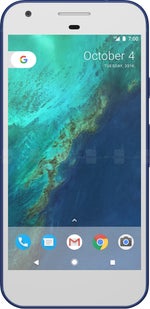
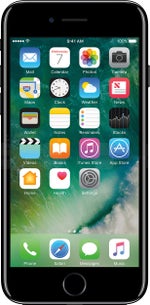














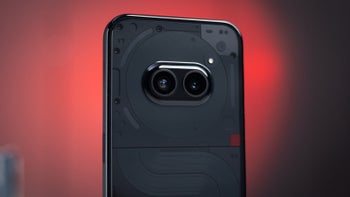
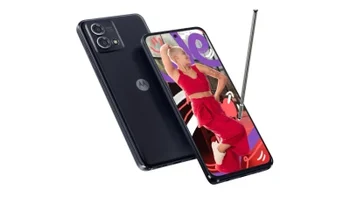
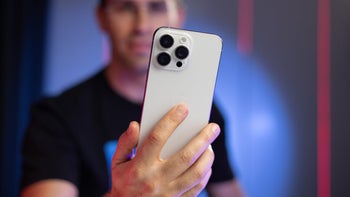
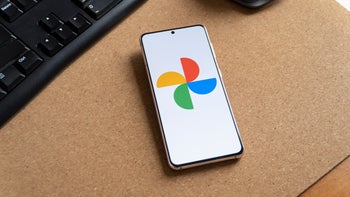
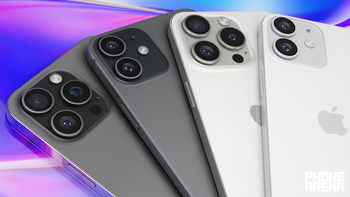
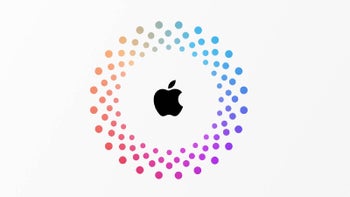






Things that are NOT allowed: